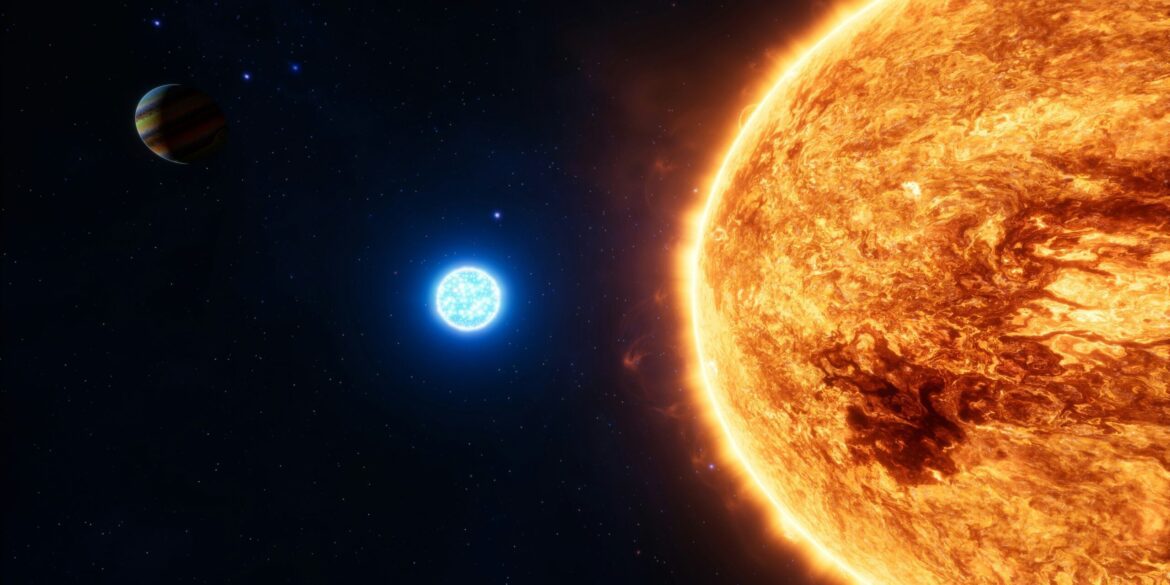NASA’s Solar Orbiter mission has made an extraordinary discovery that significantly advances our understanding of the Sun’s behavior and its complex influence on space weather. The spacecraft, which was designed to study the Sun from unprecedented close distances, has unveiled the dual “engines” responsible for accelerating superfast electrons. These powerful engines, explosive solar flares and sweeping coronal mass ejections (CMEs), have been observed more than 300 times, allowing scientists to closely study their origin and impact. This revelation marks a major milestone in solar research, as it provides a clearer picture of the mechanisms that drive space weather and how it affects Earth.
The Solar Orbiter, a joint mission between NASA and the European Space Agency, was launched with the goal of understanding the Sun’s inner workings and its effects on the solar system. Over the course of its mission, the spacecraft has provided data that is revolutionizing our knowledge of solar activity. Solar flares, which are sudden bursts of intense radiation and energy released from the Sun’s surface, and CMEs, which involve massive eruptions of solar material into space, have long been recognized as influential factors in space weather. However, the precise mechanisms that accelerate particles, particularly electrons, to such high velocities have remained a mystery—until now.
By observing these solar events directly from a closer vantage point, scientists have identified the way in which solar flares and CMEs act as accelerators for electrons, shooting them out at incredibly high speeds. The discovery of this dual engine system reveals just how dynamic and powerful the Sun’s activity can be. The explosive energy from solar flares and the sweeping force of CMEs combine to create a particle accelerator unlike anything found on Earth, but with far-reaching effects on our planet. This newfound understanding of solar acceleration processes could lead to improved predictions of space weather events, which have the potential to disrupt satellite systems, communication infrastructure, and even power grids here on Earth.
Read Also: https://goodmorningus.com/well-being-holistic-where-high-performers-align-and-heal/
Solar flares and CMEs are known to release vast amounts of energy and solar material into space, which can create a range of effects when they interact with Earth’s magnetosphere. These interactions can lead to geomagnetic storms, which in turn can interfere with GPS systems, radio communications, and electrical grids. The importance of studying these phenomena lies not only in their scientific curiosity but also in their practical applications. Understanding how the Sun accelerates particles and what triggers such explosive events can help scientists predict space weather with more accuracy, which is crucial for protecting Earth-based technologies and infrastructure.
The Solar Orbiter’s observations offer the most direct evidence yet of how the Sun’s dynamic behavior translates into high-energy particle acceleration. By studying these events up close, researchers are gaining invaluable insights into the processes that govern the Sun’s magnetic field and the way in which it impacts the broader solar system. As the mission progresses, NASA hopes to refine its models of solar activity, which could provide more accurate space weather forecasts and allow for better preparedness against solar disruptions.
This breakthrough also highlights the importance of studying space weather in the context of our increasing reliance on technology. The Sun’s activity can have profound effects on modern civilization, especially as we become more dependent on satellites for communication, navigation, and weather forecasting. The ability to predict solar storms and their effects on Earth is critical for minimizing potential damage to our technological systems. The data gathered by the Solar Orbiter will be instrumental in improving our understanding of these events and in developing strategies to mitigate their impact.
The discovery of the Sun’s particle engines is just one example of the many groundbreaking insights being revealed by the Solar Orbiter mission. As the spacecraft continues to send back data, it promises to unlock even more secrets of the Sun’s behavior, including how its magnetic field affects space weather patterns and how those patterns influence the solar system’s environment. These findings not only deepen our scientific knowledge but also have the potential to enhance the safety and resilience of modern society in the face of increasingly frequent and intense solar activity.
In the coming years, the Solar Orbiter mission will continue to provide critical data that could reshape our understanding of the Sun, the forces at play within its atmosphere, and the far-reaching effects of its activity on Earth and beyond. By studying the Sun up close, NASA is pushing the boundaries of solar research and paving the way for a more secure future in the age of space weather.

